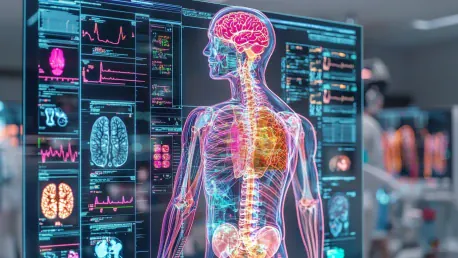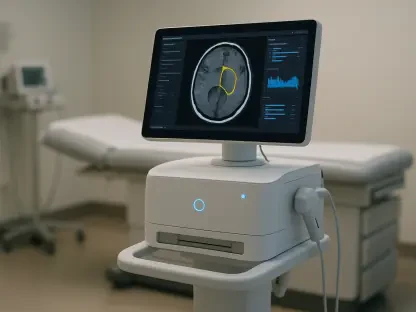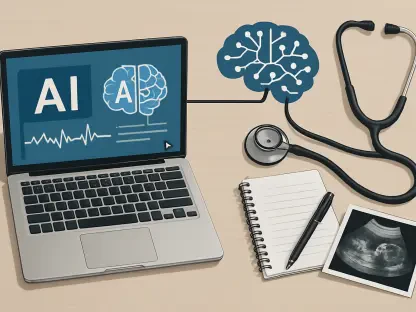As 2024 recedes into the annals of history, the spotlight on artificial intelligence (AI) in the medtech industry has only grown brighter. Major players like GE Healthcare, Medtronic, and Dexcom have introduced new AI features, while companies such as Stryker and Quest Diagnostics have expanded their AI capabilities through strategic mergers and acquisitions. Much of the discourse at medtech conferences has been centered around the evolving regulatory landscape and the exciting possibilities of generative AI, a subset of AI designed to create new data. Although the FDA has made significant strides in clarifying requirements for AI-enabled device submissions, it still grapples with the challenge of approving tools that continuously adapt or leverage generative AI, underscoring ongoing regulatory uncertainties. The medtech landscape of 2025 promises further transformation as AI technologies advance and regulatory frameworks evolve.
Regulatory Developments
One prominent trend is the FDA’s issuance of new guidelines designed to offer clarity for device developers navigating the complex regulatory terrain. In late 2024, the FDA finalized its guidance on pre-determined change control plans (PCCPs). This framework enables developers to pre-specify modifications to devices post-market entry, requiring more upfront effort but potentially saving time and reducing postmarket demands. Subsequently, in early 2025, the FDA released draft guidance outlining the information necessary for AI device submissions, along with conditions warranting postmarket monitoring. This guidance also encourages the inclusion of PCCPs in submissions, aiming to streamline the process.
Industry experts such as Amanda Johnston from Gardner law firm and Megan Robertson of Epstein Becker Green have noted that these guidances will likely facilitate a more transparent submission process by offering developers a clearer understanding of the FDA’s expectations. Yet, despite these advances, uncertainties persist, primarily regarding how the Trump administration plans to approach AI regulation after revoking an AI-centric executive order from the previous leadership. This regulatory ambiguity continues to loom over the AI-enabled devices sector, challenging both developers and regulators to adapt rapidly.
Payment Challenges
Even amidst the excitement surrounding AI in medtech, significant barriers to widespread adoption remain, chief among them the lack of specific insurance reimbursement pathways. The Centers for Medicare & Medicaid Services (CMS) currently do not have designated pathways for reimbursing AI-enabled technologies, which hampers their market penetration. Medtech companies often resort to alternative methods, such as Medicare’s New Technology Add-on Payments pathway. While efforts are underway to make progress in this area, including advocacy by a bipartisan group of senators for a dedicated payment pathway for AI-based healthcare services, substantial progress has yet to be observed.
Hospitals also face the challenge of evaluating the economic returns on their AI investments, especially under increasing scrutiny from various stakeholders. The initial fervor and enthusiasm surrounding AI tools have given way to a more circumspect approach, with healthcare providers demanding incontrovertible evidence of cost-effectiveness and tangible value from these innovations. Consequently, medtech companies are tasked with presenting compelling value propositions to justify the high costs associated with AI tools, ensuring that these investments yield measurable benefits in improving patient care and outcomes.
Foundational and Administrative AI Tools
Traditionally, AI tools in medtech have been predominantly concentrated in radiology, but a palpable shift is taking place as these technologies find applications in other areas such as pathology, ophthalmology, and cardiology. Companies are increasingly developing large language models for administrative functions, such as generating clinical notes, thereby streamlining workflows and enhancing overall efficiency. This trend indicates a broadening horizon for AI applications within healthcare.
As Nina Kottler from Radiology Partners observes, AI applications in radiology have evolved significantly over the past decade. The focus has moved from condition-specific detection tools to technologies designed to improve overall workflow. Foundational models, which can perform multiple functions, are rapidly gaining momentum. For example, GE Healthcare is creating models capable of a range of tasks, from processing MRI images to analyzing electronic health records. This shift underscores the versatility and expanding role of AI in medtech, transcending beyond traditional boundaries to encompass a wider array of healthcare applications.
Some text-based AI tools, like Rad AI’s radiology report generation tool, are currently not classified as medical devices, thus avoiding stringent regulatory oversight. However, there is speculation about potential regulatory shifts that may bring such tools under the purview of device regulations in the future. On the other hand, vision language models capable of analyzing images and producing reports are anticipated to fall under medical device regulations, indicating an increasingly regulated environment for sophisticated AI tools capable of influencing clinical decisions.
Need for Robust Evaluations
The increasing role of AI in healthcare underscores the urgent need for thorough evaluations, governance, and ongoing performance monitoring. Before hospitals adopt AI tools, they must meticulously assess and critique these technologies to ensure they operate correctly. Scott Lucas from ECRI emphasizes that effective governance and appropriate resource allocation are vital for managing advanced systems, ensuring they perform as intended and integrate smoothly into clinical settings.
Although validating AI predictive models on local data is critically important, only a few hospitals conduct such assessments prior to deploying these tools. Testing on localized data is essential for maintaining consistent performance in various environments. Experts advocate for rigorous and continuous evaluation processes, which include assessing AI models based on local data and persistent performance monitoring. Such thorough evaluations are key to maximizing AI’s potential benefits in enhancing patient outcomes and overall healthcare delivery.
Given the advancements and challenges in medical technology, it is crucial for stakeholders to navigate evolving regulations and address economic considerations to fully harness these innovations. This involves fostering strong partnerships between healthcare providers and AI vendors, ensuring effective oversight, and supporting the continuous evolution of these technologies. Moving forward, diligent efforts are needed to integrate AI successfully into existing healthcare systems, driving progress and improving patient care.









